Guardians of Youth: How Antioxidants Keep You Young Inside and Out

Every day, free radicals are created in your body. “Free” might sound good, but free radicals damage cells. However, they are a natural part of life.
How do you protect yourself?
With antioxidants – superheroes for your health and guardians for your youth.
Here’s what you’ll find in this article:
- What are free radicals? And how are they created
- How oxidative stress harms your body
- Health conditions linked to free radicals
- Antioxidants to the rescue
- High-antioxidant foods
- High-antioxidant beverages
- Why antioxidant supplements don’t work
- Recipes with high-antioxidant foods
What Are Free Radicals? How Are They Created?
Free radicals are unstable oxygen molecules.
You can’t avoid free radicals. They are just part of life.
When you digest food, experience stress, or are exposed to unhealthy things, such as cigarette smoke, alcohol, pollution, and pesticides, free radicals are created in your body.
How Oxidative Stress Harms Your Body
Oxidative stress is an imbalance of free radicals and antioxidants in the body, leading to cell and tissue damage.
Oxidative stress plays a role in aging.
And, a large body of research suggests that long-term oxidative stress contributes to inflammation in the body and most chronic diseases, such as cancer, heart disease, Alzheimer’s, and diabetes.1
The modern lifestyle – with meat-heavy diets, processed food, exposure to toxins, and a lack of exercise – plays an important role in oxidative stress.
Health Conditions Linked to Free Radicals
Some of the health conditions linked to free radicals include:
- Damage to the nerve cells in the brain (Parkinson’s and Alzheimer’s)
- Deterioration of the eye lens, which contributes to vision loss
- Inflammation of the joints (arthritis)
- Acceleration of the aging process
- An increased risk of heart disease
- Some cancers
Antioxidants to the Rescue!
Antioxidants help protect your cells against free radicals.
They neutralize free radicals by donating an electron, which neutralizes them.
Some antioxidants are made in the body. And foods provide many of the essential antioxidants that your body can’t make on its own.
Eating foods rich in antioxidants reduces oxidative stress – lessening the effects of aging and your disease risk.
11 Foods High in Antioxidants
Where do you get antioxidants? From plants!
On average, plant foods have 64 times more antioxidants than meat-based foods.2
Many plant foods are high in antioxidants. These are some of the best:
Antioxidant-Rich Food #1 — Dark Chocolate
Dark chocolate has more cocoa – and more minerals and antioxidants3 – than regular chocolate.
When you choose your dark chocolate, look for types that are organic, fair trade, have a high cacao content (60% or higher), and are naturally sweetened (agave, maple syrup, stevia, etc. rather than cane sugar).
Antioxidant-Rich Food #2 — Blueberries
All berries are a great choice for antioxidants. Blueberries, in particular, are packed with nutrients and antioxidants.
Studies show that the antioxidants in blueberries may delay aging-related decline in brain function.4
Your best choice is wild blueberries – they may have twice as many antioxidants as regular blueberries!
Antioxidant-Rich Food #3 — Kale
Kale is one of the most nutritious leafy greens. And, it’s rich in antioxidants.5
The red varieties of kale contain more anthocyanin antioxidants.
Cooking kale was shown to reduce antioxidants,6 so it’s best to enjoy kale in green smoothies and salads more often than cooked.
Antioxidant-Rich Food #4 — Red or Purple Cabbage
Purple, or red, cabbage is rich in vitamins and has a high antioxidant content.7
The vitamin C in this colorful cabbage acts as an antioxidant, helping strengthen the immune system and keeping the skin firm.
Purple cabbage is also incredibly cheap, so it’s an excellent way to get antioxidants and save money!
Antioxidant-Rich Food #5 — Beets
Beets are a great source of antioxidants and other nutrients.
They are particularly rich in an antioxidant called betalains, which gives them their reddish color.
Studies have linked betalains to a lower risk of cancers in the colon and digestive tract.8
I love beets, but I know that many people don’t. Find one of my most popular smoothie recipes below – you won’t taste the beets!
Antioxidant-Rich Food #6 and #7 — Walnuts and Pecans
Walnuts and pecans have the highest amount of antioxidants of all the nuts.9
Antioxidant-Rich Food #8 — Beans
Beans are one of the best plant sources of antioxidants.10
In particular, they contain an antioxidant called kaempferol, which may reduce inflammation11 and potentially suppress cancer growth.12
Antioxidant-Rich Food #9 — Artichokes
Artichokes are a great source of antioxidants, which was fun to learn, since they’re also one of my favorite foods in the whole world, yay!
They are especially rich in an antioxidant called chlorogenic acid, which may help reduce the risk of certain cancers, type 2 diabetes, and heart disease.13
Antioxidant-Rich Food #10 — Goji Berries
Goji berries contain unique antioxidants known as Lycium barbarum polysaccharides, linked to a reduced risk of cancer and heart disease.14
Goji berries are pricier. So you can use them, in moderation, on oatmeal, as a topping for smoothie bowls, sprinkled on yogurt, or mixed in salads.
Antioxidant-Rich Food #11 — Spices
Most spices are very high in antioxidants.
Clove has the highest antioxidant value.15
Here are some other spices that are high in antioxidants:
- Ginger
- Turmeric
- Garlic
- Peppermint
- Allspice
- Cinnamon
- Oregano
- Thyme
- Sage
- Rosemary
- Parsley
Antioxidant-Rich Beverage #1 — Hibiscus Tea
Hibiscus tea has the highest level of antioxidants of all the teas – 400% higher than green tea.16
Antioxidant-Rich Beverage #2 — Green Tea
Green tea has one of the highest amounts of antioxidants of any tea.17
Green tea can also be used as a liquid in green smoothies. (Find a recipe below.)
Antioxidant-Rich Beverage #2 — Rooibos Tea
Research shows that the antioxidant effects of rooibos are similar to, though not quite as strong, as the antioxidants in green tea.18
An Important Note About Tea
Many tea bags are full of microplastics and other concerns.
Find out what you need to know to make the healthiest tea choice. You’ll see why I prefer to buy loose-leaf tea.
Why Antioxidant Supplements Don’t Work
Most research on antioxidant supplements did not find the benefits they hoped for.19 Vitamin E and other antioxidant supplements didn’t protect against heart disease or cancer.
One study even showed that taking beta-carotene supplements actually increased the chance of lung cancer in smokers!20
As science shows, antioxidants tend to work best synergistically with other nutrients, plant chemicals, and other antioxidants, in whole plant foods. Rather than in a pill.
9 Recipes with High-Antioxidant Foods
Dark Chocolate Black Bean Brownies
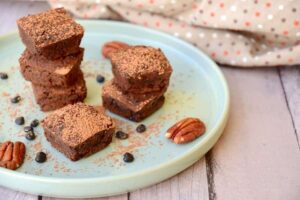
A healthy brownie recipe? Yes!
This recipe gives you three foods that are high in antioxidants – dark chocolate, black beans, and walnuts.
Blueberry Mango Smoothie
Use frozen wild blueberries in this smoothie to gain the most antioxidants.
Spinach is another leafy green that’s high in antioxidants.
Mean Green Detox Smoothie
Get your antioxidant-rich kale – plus plenty of other veggies – in this delicious, detoxifying smoothie.
Spinach Strawberry Salad and Dressing
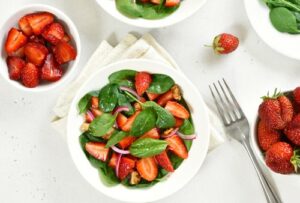
This refreshing salad is loaded with antioxidants – from the strawberries, spinach, and pecans
Thai Lettuce Wraps
These wraps give you a great way to use antioxidant-rich red cabbage – plus, they have garlic and ginger.
Hot Pink Breakfast Smoothie
You won’t even know there are high-antioxidant beets in this gorgeous, yummy recipe. It’s my favorite breakfast!
Beans and Greens Soup

A good soup is delightful in winter. This one gives you kale, beans, and spices. It’s a high-nutrient feast.
Power Green Smoothie
This recipe uses green tea as the base. Plus, it includes blueberries and some high-antioxidant spices.
Apple Butter
How to use the highest-antioxidant spice, clove? Here’s one way. You could also make this using soaked dates instead of coconut sugar.
Enjoy an Easy Way to Get Antioxidants with Our Superfood Plant Protein
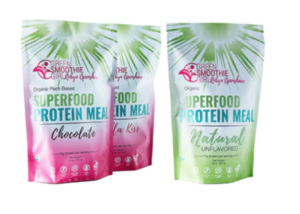
Want an easy way to add more antioxidants to your days?
Our Organic Superfood Complete Meal Plant Protein gives you kale and spinach – plus chlorella and spirulina, which have a wide array of antioxidants.
Eat Antioxidant-Rich Plant Foods Daily, With Every Meal!
To stay out of oxidative debt, you need to take in more antioxidants than your free radicals use up.
Free radicals are produced during digestion after every meal. So, every meal should contain high-antioxidant foods – which means whole plant foods.21
And remember: Especially when you’re stressed, sick, or tired, you need even more antioxidants. So load up on delicious, plant foods to reduce the effects of aging, protect your health, and boost your longevity.
Read Next: 7 Principles of a Perfect Diet

Disclosure: This post may contain affiliate links that help support the GSG mission without costing you extra. I recommend only companies and products that I use myself.
Resources
- Carlsen, Monica H et al. The total antioxidant content of more than 3100 foods, beverages, spices, herbs and supplements used worldwide.” Nutrition journal, vol. 9 3. 22 Jan. 2010, doi:10.1186/1475-2891-9-3
- Greger, M. (2011). Antioxidant Power of Plant Foods vs. Animal Foods.
- Food Data Central. U.S. Department of Agriculture. Chocolate, dark.
- Devore, E. E., Kang, J. H., B. Breteler, M. M., & Grodstein, F. (2012). Dietary intakes of berries and flavonoids in relation to cognitive decline. Annals of Neurology, 72(1), 135-143. https://doi.org/10.1002/ana.23594
- Lučić D, Pavlović I, Brkljačić L, et al. Antioxidant and Antiproliferative Activities of Kale (Brassica oleracea L. Var. acephala DC.) and Wild Cabbage (Brassica incana Ten.) Polyphenolic Extracts. Molecules. 2023;28(4):1840. Published 2023 Feb 15. doi:10.3390/molecules28041840
- Sikora, Elżbieta, and Izabela Bodziarczyk. Composition and antioxidant activity of kale (Brassica oleracea L. var. acephala) raw and cooked. Acta scientiarum polonorum. Technologia alimentaria vol. 11,3 (2012): 239-48.
- Wiczkowski, Wieslaw & Szawara-Nowak, Dorota & Topolska, Joanna. (2013). Red cabbage anthocyanins: Profile, isolation, identification, and antioxidant activity. Food Research International. 51. 303–309. 10.1016/j.foodres.2012.12.015.
- Madadi E, Mazloum-Ravasan S, Yu JS, Ha JW, Hamishehkar H, Kim KH. Therapeutic Application of Betalains: A Review. Plants (Basel). 2020;9(9):1219. Published 2020 Sep 17. doi:10.3390/plants9091219
- Blomhoff R, Carlsen MH, Andersen LF, Jacobs DR. Health benefits of nuts: potential role of antioxidants. British Journal of Nutrition. 2006;96(S2):S52-S60. doi:10.1017/BJN20061864
- Ombra MN, d'Acierno A, Nazzaro F, et al. Phenolic Composition and Antioxidant and Antiproliferative Activities of the Extracts of Twelve Common Bean (Phaseolus vulgaris L.) Endemic Ecotypes of Southern Italy before and after Cooking. Oxid Med Cell Longev. 2016;2016:1398298. doi:10.1155/2016/1398298
- Alam, Waqas et al. Kaempferol as a Dietary Anti-Inflammatory Agent: Current Therapeutic Standing. Molecules (Basel, Switzerland) vol. 25,18 4073. 7 Sep. 2020, doi:10.3390/molecules25184073
- Imran M, Salehi B, Sharifi-Rad J, Aslam Gondal T, Saeed F, Imran A, Shahbaz M, Tsouh Fokou PV, Umair Arshad M, Khan H, et al. Kaempferol: A Key Emphasis to Its Anticancer Potential. Molecules. 2019; 24(12):2277. https://doi.org/10.3390/molecules24122277
- Tajik, Narges et al. The potential effects of chlorogenic acid, the main phenolic components in coffee, on health: a comprehensive review of the literature. European journal of nutrition vol. 56,7 (2017): 2215-2244.
- Ma ZF, Zhang H, Teh SS, et al. Goji Berries as a Potential Natural Antioxidant Medicine: An Insight into Their Molecular Mechanisms of Action. Oxid Med Cell Longev. 2019;2019:2437397. Published 2019 Jan 9. doi:10.1155/2019/2437397
- Carlsen MH, Halvorsen BL, Holte K, et al. The total antioxidant content of more than 3100 foods, beverages, spices, herbs and supplements used worldwide. Nutr J. 2010;9:3. Published 2010 Jan 22. doi:10.1186/1475-2891-9-3
- What Do the Antioxidants in Tea Do? Art of Tea.
- Chacko SM, Thambi PT, Kuttan R, Nishigaki I. Beneficial effects of green tea: a literature review. Chin Med. 2010;5:13. Published 2010 Apr 6. doi:10.1186/1749-8546-5-13
- A.Von Gadow, E. Joubert, C.F. Hansmann. Comparison of the antioxidant activity of rooibos tea (Aspalathus linearis) with green, oolong and black tea. Food Chemistry, Volume 60, Issue 1, 1997, Pages 73-77, https://doi.org/10.1016/S0308-8146(96)00312-3.
- Antioxidants. The Nutrition Source
. Harvard T.H. Chan School of Public Health. - Russell, Robert M. Beta-carotene and lung cancer. Pure and Applied Chemistry, vol. 74, no. 8, 2002, pp. 1461-1467. https://doi.org/10.1351/pac200274081461
- Greger, M. (2013). Antioxidant-Rich Foods with Every Meal.
Image Notes
- Antioxidants by Nick Youngson CC BY-SA 3.0 Alpha Stock Images
- Blueberry image licensed under the Creative Commons Attribution 2.0 Generic license by Paxson Woelber on Flickr
- Goji berries image licensed under the Creative Commons Attribution-NonCommercial 2.0 Generic by Like_the_Grand_Canyon on Flickr
- Hibiscus tea image licensed under a Creative Commons 2.0 (Attribution required) by Marco Verch on Flickr
Posted in: Health Concerns, High-Vibe Living, Immunity, Lifestyle, Natural Remedies, Preventive Care, Whole Food



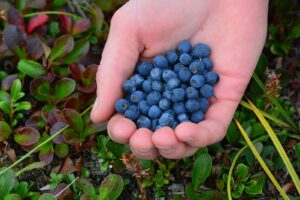
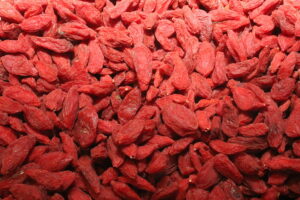
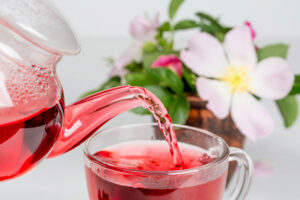
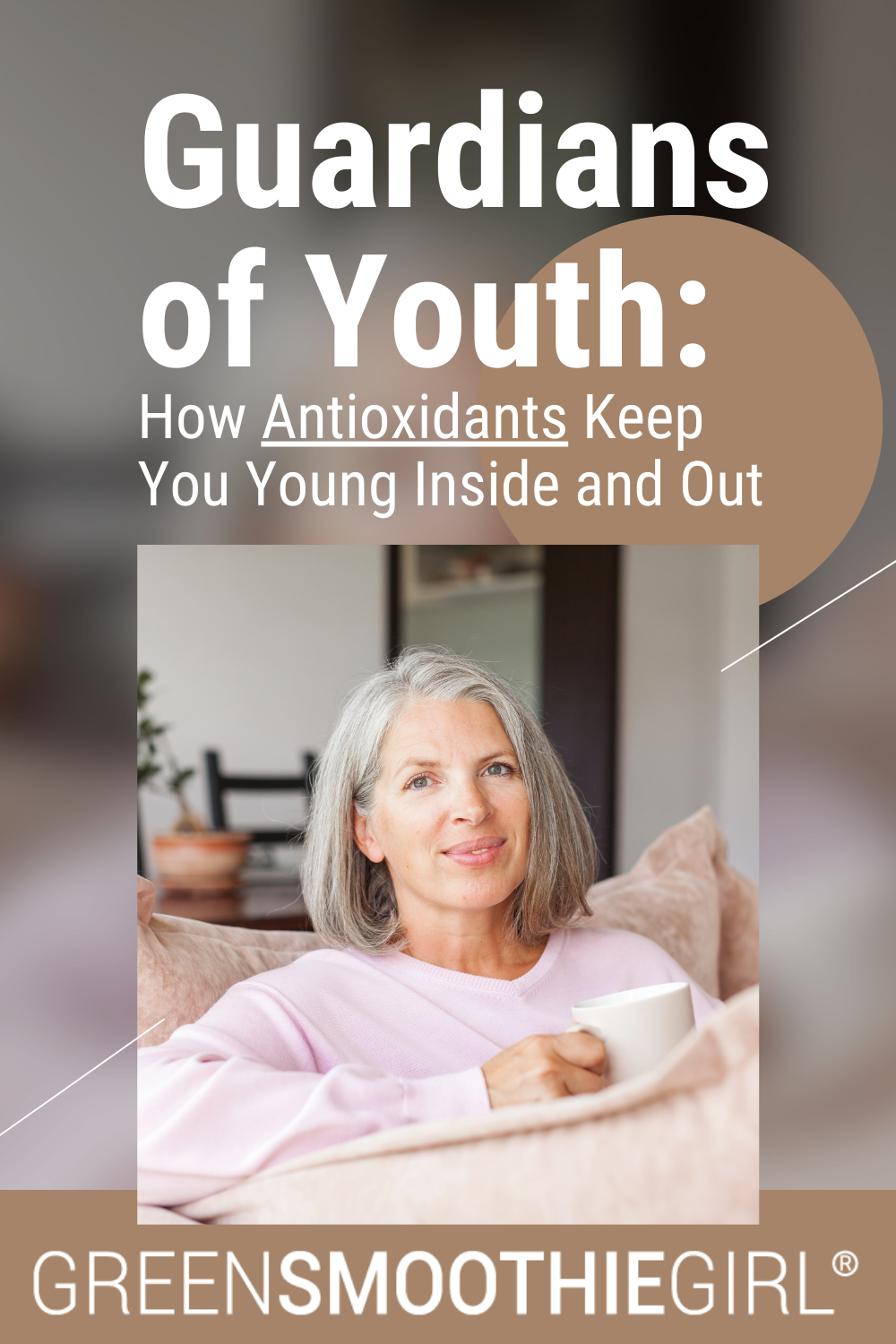












No comments found, but you can be our first!